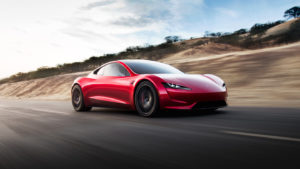Overview of the EV Market

Tesla Roadster
Just a few years ago, one could count the number of electric vehicles available for purchase on one hand. My first EV experience was driving GM EV-1’s in 1998 for LADWP. Then the Tesla Roadster got the ball rolling in 2008. By December 2016, there were 30 “highway legal” plug-in cars in the American market made by more than a dozen car manufacturers. Today there are about 40 EVs available from more than a dozen different brands, and the number is growing.
Most broadly defined, EVs come in all sorts of configurations. There are two-wheelers. There are plug-in hybrids, pure electric, and EVs with both electric and gasoline propulsion systems where the front wheels are electric and the rear wheels are gasoline powered (BMW i8). The Cadillac CT6 is like a Volt luxury car. Electric buses are booming, and recently Tesla introduced its semi tractor-trailer with a 500-mile range.
And here’s what’s in store for 2018 in the American market: The long-awaited Tesla Model 3 is now rolling off the assembly lines. There’s a new version of the Leaf, Jaguar is launching the I-PACE, and there’s word of an all-electric Audi Quattro. Furthermore, Faraday Future and Lucid Motors plan to launch their first production EVs in 2018.
